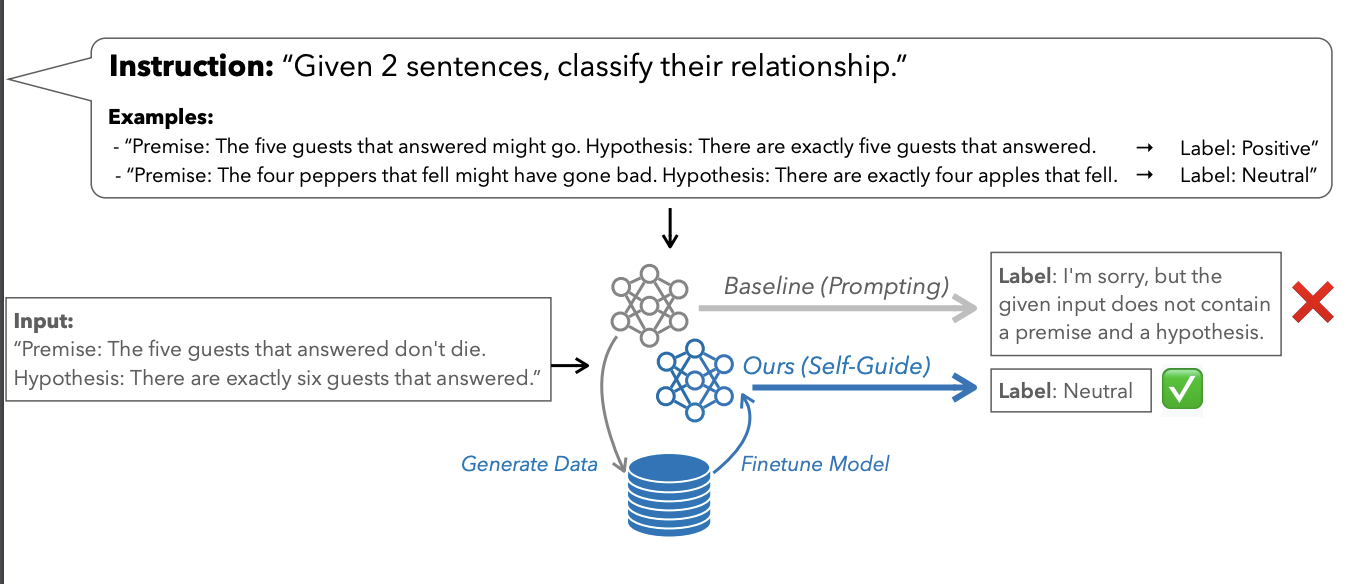We introduce SELF-GUIDE, a novel methodology that enables LLMs to better execute task-specific instructions without requiring additional data or training signals. SELF-GUIDE operates in the few-shot setting, where we are given only a task instruction and around 3 examples of task demonstrations. SELF-GUIDE works by first employing the target model to generate a synthetic dataset for a given task. The model is then finetuned on this “self-generated’’ data.
We use tasks from NaturalInstructions V2. For each task, we have task instructions and example input-output pairs according to the dataset.
According to our one param fits all parameters, you could use them to self-generate the dataset and finetune the dataset to improve its performance.
Selected tasks including (The validation and test set can be accessed from the NI_dataset folder)
- Generation tasks: task121, task039, task036, task1195, task1345, task281, task1562, task1622
- Classification tasks: task190, task199, task200, task738, task937, task1385, task1386, task1516, task1529, task1612, task1615, task284, task329, task346
- Install our main framework with
pip install . - Install
vllm trl accelerate
In our experiment using vicuna-7b with full-parameter finetuning, we use a single 80G A100.
We implement different parameter searching pipelines for classification tasks and generation tasks, i.e. pipeline_classification.py and pipeline_generation.py under the self-guide directory.
cd self-guide
python pipeline_classification.pyNote that the pipeline is used for searching parameters with human-annotated datasets to evaluate the performance of the self-guided model.
You can modify the pipeline and config tasks to create your new self-guided model without annotated data.
